The most audacious jewellery heists after Hatton Garden theft
- Published
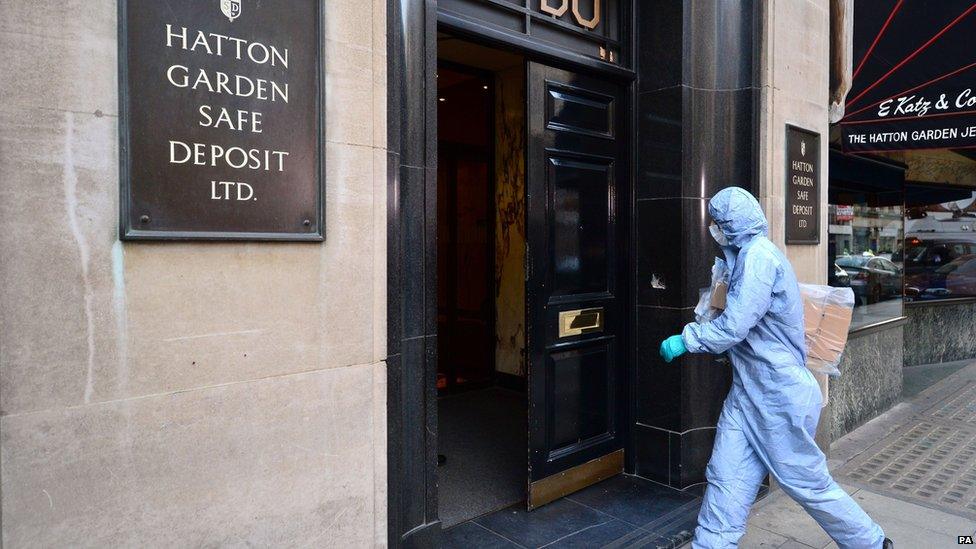
Over the Easter weekend robbers targeted a vault in London's Hatton Garden making off with the contents of around 70 safe deposit boxes.
The value of the theft, and what was stolen, isn't known but could run into millions of pounds.
Exactly how the robbers got into the vaults is also a mystery, but there have been plenty of examples of high-tech break-ins before.
Some were more brute strength jobs, some were so high-tech Hollywood couldn't make them up. All were audacious. Here are some of the most astonishing.
The Millennium Dome raid
One that went very wrong, for the robbers.
On 7 November 2000 a team raided a diamond exhibition in the Millennium Dome (Now the 02 Arena).
Using a JCB to smash through the building's perimeter fence and wall, and nail guns and sledge hammers to break through the armoured glass, they planned to steal around £200 million in diamonds, including the 203 Carat Millennium Star, one of the world's greatest gemstones.

Meticulously planned and practiced, the team of robbers had a speed boat waiting to make their escape, but there was a hitch.
The police knew they were coming.
A tip-off from a source led the Met's anti-heist Flying Squad to step up surveillance on the robbers in the lead-up to the raid.
The gemstones were replaced with fakes, and all the staff at the dome were replaced with armed officers.
One of the most audacious robberies in history saw the team walk right into a police trap.
Seven men were arrested during the raid, and six of them were jailed over the raid (one, Terry Millman, died of cancer before the trial).
Speaking on the first day of the trial, robber William Cockram told the court they hadn't planned to hurt anyone, because there was no one to hurt - security at the Dome had been so poor they thought they'd be able to walk in and out.
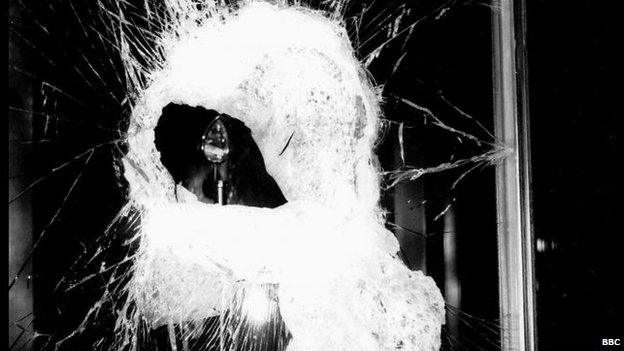
One of the robbers, Raymond Betson, was jailed again in August 2014 for a botched ram raid on a cash depot in Swanley, Kent.
Once again, he and accomplices smashed the wall down using a digger - but it was the wall of the wrong building.
The Baker Street robbery
The robbery of Lloyds Bank on the corner of Baker Street and Marylebone Road in London on 11 September 1971 was the subject of the hit 2008 film The Bank Job, as well as plenty of urban legends.
It was one of the original high-tech heists.
A team of robbers rented a leather goods shop two doors down from the bank, and tunnelling during the quiet weekend periods, dug a 15-metre tunnel under the bank, blowing the wall of the vault down with explosives.
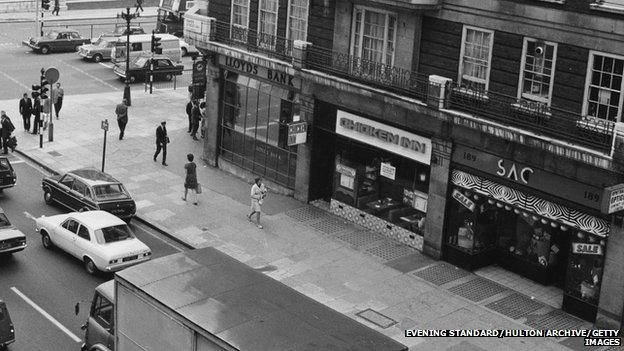
The robbery was actually detected by an amateur radio enthusiast who tuned into a conversation between the robbers and their rooftop lookouts, but the police initially didn't take him seriously.
Some hours later, radio detector vans were dispatched by Scotland Yard to try to work out which bank was being robbed but there were more than 750 possible options.
The Baker Street bank was actually checked while the robbers were still inside, but since the safe door was still closed it was overlooked.
An estimated £3 million was stolen, £33 million in today's money.
Four men were caught and jailed over the robbery, but it's believed the mastermind was never caught.
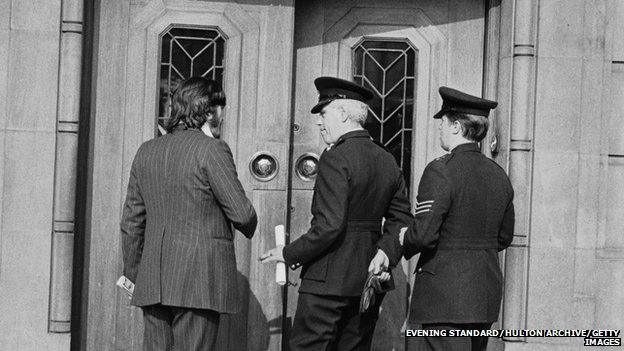
Plenty of myths and legends surround the robbery, including suggestions that the safe deposit boxes contained incriminating photos of the royal family, but no concrete evidence has ever supported those claims.
Antwerp diamond heist
Now for this one, you'll have to suspend your belief, because it's pure Hollywood. At least according to the man who organised it.
Leonardo Notarbartolo was a career thief who, along with a team of experts, spent more than two years casing a diamond and jewellery vault in Antwerp, Belgium.
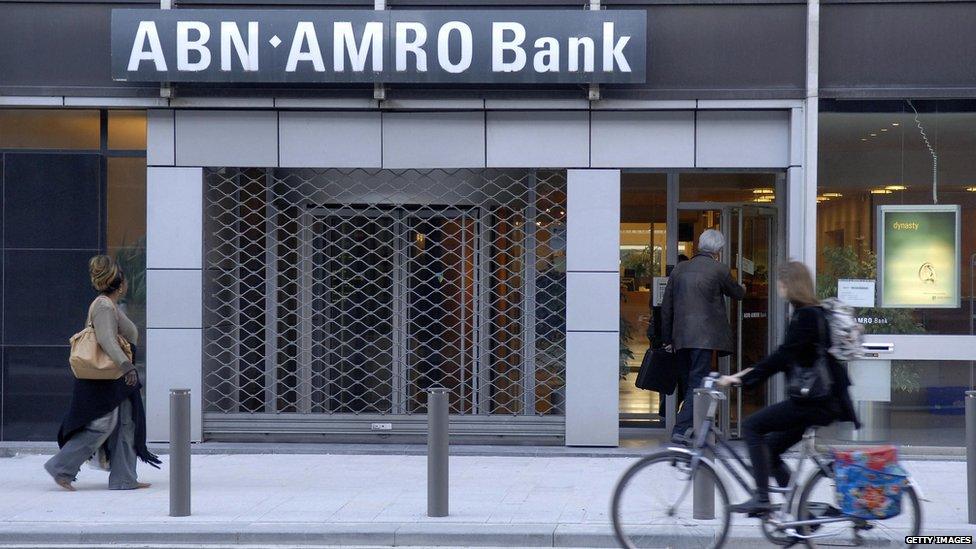
Then, in February 2003, he raided it and escaped with an estimated 109 million euros (£79m).
Notarbartolo hired a small office in the Antwerp Diamond Centre, buying and selling diamonds locally in order to learn the habits of the security guards and the vault's security system.
And what a security system. The safe room had a three tonne steel door with magnetic bolts that triggered an alarm if they were loosened.
It had infrared heat detectors, a seismic sensor and a radar system to detect movement.
The team waited until the weekend of the 15-16 February, when a diamond industry sponsored tennis tournament meant the jewellery district in Antwerp was quieter than usual.

They cracked the door by hiding spy cameras near it and recording the code weeks beforehand, then using a heavy aluminium plate with sticky tape on it to bypass the magnetic bolts.
They used hair spray to cover the infra-red sensors (which also deactivated the radar).
They carefully exposed the security system wires in the ceiling and short circuited them to bypass the rest of the alarms, before using custom made drills to break into more than 100 safe deposit boxes.
Leonardo was only caught when a resident miles from the heist site reported some fly tipping to police - including a series of Diamond Centre branded envelopes and reels of video tape (stolen from the vault security cameras).
His DNA was found on a half-eaten sandwich and he was jailed for 10 years.
The thief has previously alleged he was hired by local diamond dealers for the raid, which was intended as an insurance scam. Experts say that explanation is unlikely.
Like we said, pure Hollywood.
Follow @BBCNewsbeat, external on Twitter, BBCNewsbeat, external on Instagram and Radio1Newsbeat, external on YouTube